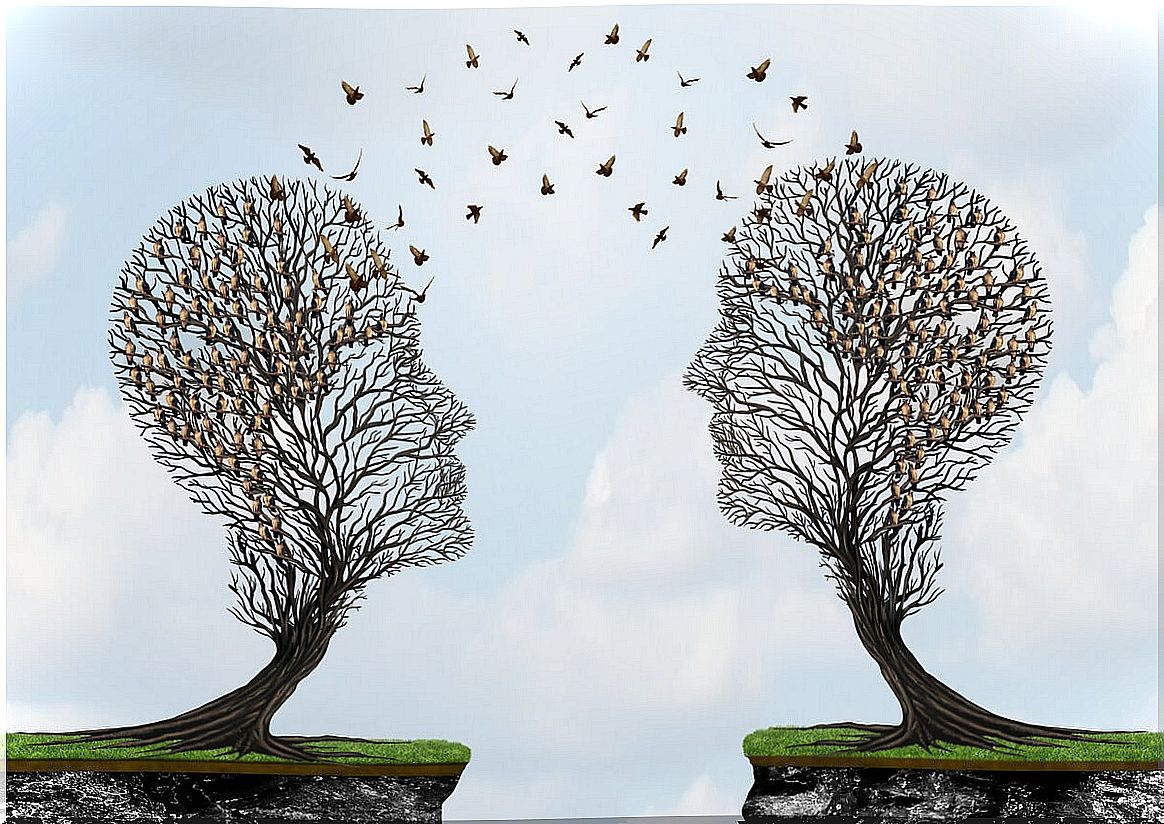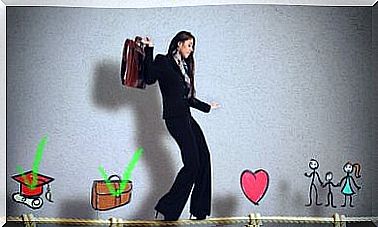The Effect Of False Consensus

Thanks to social psychology, today we know multiple effects and very curious phenomena that have to do with the way we think, relate and live in society. One of these phenomena is the false consensus effect. Do you think we are aware of the heterogeneity of our opinions? And that we all have our own opinion? Perhaps the opposite is true?
This is what the false consensus effect that we will explain throughout this article is about. We will know what it consists of, what it reveals about us and our self-esteem, why it happens and what functions it can have. In addition, we will also mention interesting research that has been done in relation to this effect.
The False Consensus Effect: What Is It And Why Does It Happen?
According to cognitive psychology, the effect of false consensus is the tendency to assume that others think and act like us to a greater degree than they actually do. In other words, through this effect, we think that our way of thinking or acting is more popular than it really is. That is, we overestimate the degree of agreement that others have, in relation to us, in opinions, ideas or behaviors.
Why does the false consensus effect appear? What function does it have? The fact that people want to feel supported in relation to how we behave or how we think is a reality. For this reason, among others, the false consensus effect appears.
In addition, thinking that others think the way we do increases our self-confidence. In short: we all want to think that our behaviors are “normal”, that is, that they do not deviate from the norm, in order not to feel strange or guilty about something we do or think.

Maintain self-esteem
There are different hypotheses that try to explain this effect; one of them argues that spending time with people who think like us could reinforce the misconception that most others think like us.
Other hypotheses allude to the construction and maintenance of self-esteem as the cause of this phenomenon. At the end of the day, thinking that others think the same as we do can make us feel more “normal”, more “accepted” or more “balanced”, in a way.
Boost self-confidence
On the other hand, there are hypotheses that pose the effect of false consensus as a defense mechanism (which we will comment in more detail in the next section); According to these theories, the effect would arise spontaneously and automatically, and would seek to protect our self-confidence.
In general, we like to feel that we are “right” and that we are not wrong; To do this, we look for external support, even if it is overestimated.
Maintain emotional balance
Finally, the false consensus effect would also be explained as a mechanism that allows us to maintain emotional balance ; Furthermore, being with people who have the same opinion as us (or who we think do, to a greater extent than it really is), would reinforce our social relationships in peer groups.
In the end, it all has to do with the same thing: feeling accepted, raising self-esteem and enhancing that internal balance that we constantly seek.
A defense mechanism?
Sigmund Freud, an Austrian neurologist considered the father of psychoanalysis, raised some hypotheses at the beginning of the last century that could explain why we tend to find an overestimated and unrealistic support in everything we do in others.
According to him, the effect of the false consensus would be a defense mechanism. Freud baptized it with the name of projection; projection involves attributing to others (for better or for worse), your own ideas and feelings. This hypothesis, as we have commented previously, would be maintained by some experts in social psychology.
How do we maintain the false consensus effect?
The lack of information in relation to the real support of their own opinions, can contribute to the maintenance of the false consensus effect. That is, if we do not know who really supports us or who thinks the same as we do, we may tend to “invent” it to compensate, through this effect.
On the other hand, the effect of false consensus is maintained because people tend to seek opinions that follow our same line and ignore or despise those that are far from our ideas or those that would lead us to really know how many people support us.
The latter consists of motivated reasoning, a bias through which our unconscious desires, motivations and beliefs influence the way we interpret reality.
Is it pathological?
This phenomenon is part of a common social thought. This does not mean that it cannot cause us certain problems, especially when we tend to think that everything, absolutely everything we do or think, is thought by all people. Then the alteration of the perception of reality would be much greater.
Interestingly, it is very likely that the absence of this bias is what is really pathological (although to different degrees). Along these lines, Tabachnik’s group discovered, in 1983, that there are people who do not present this bias; Such people would even feel that no one supports them and that their ideas are completely far from “normal”.
More specifically, Tabachnik and his colleagues, in the study, found that people with depression could have a totally opposite bias and that would imply the absence of the false consensus effect.

Investigation of the phenomenon
Years after Freud spoke of the effect of false consensus as a projection mechanism, in the 1970s, this effect began to be investigated and clarified. It was researchers Lee Ross, David Greene, and Pamela House who, in 1977, conducted a study in which they asked college students to answer two questions.
The first question was: would you agree to take a sign hanging that says “repent” and walk with it around campus? Some of the students accepted the challenge and some did not. After this first part of the experiment, they were asked to estimate the percentage of people who thought they had answered the same thing as themselves.
The results were as follows: all the students, regardless of whether or not they had accepted to wear the poster, overestimated the percentage of people who would have chosen the same option as them. More specifically, the students who agreed to carry the poster, on average, believed that 60% of the other students would also accept to carry it. As for the group of students who did not accept to carry the poster, they thought that only 27% of the students would accept to carry it.









